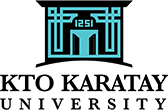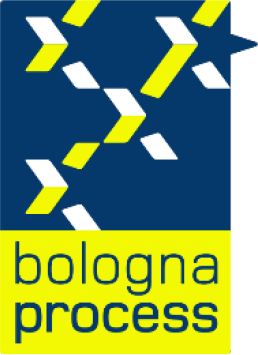Medical Imaging Techniques
Course Details

KTO KARATAY UNIVERSITY
Vocational School of Medical Services
Programme of Medical Imaging Techniques
Course Details
Vocational School of Medical Services
Programme of Medical Imaging Techniques
Course Details

| Course Code | Course Name | Year | Period | Semester | T+A+L | Credit | ECTS |
|---|---|---|---|---|---|---|---|
| 02921009 | Radiotherapy | 1 | Spring | 2 | 2+0+0 | 3 | 3 |
| Course Type | Elective |
| Course Cycle | Associate (Short Cycle) (TQF-HE: Level 5 / QF-EHEA: Short Cycle / EQF-LLL: Level 5) |
| Course Language | Turkish |
| Methods and Techniques | - |
| Mode of Delivery | Face to Face |
| Prerequisites | - |
| Coordinator | - |
| Instructor(s) | - |
| Instructor Assistant(s) | - |
Course Content
General Principles in Oncology (What is cancer, its formation mechanisms, methods used in cancer diagnosis, classification and treatment plan) The place of radiotherapy in cancer treatment (Aims of radiotherapy, radiotherapy decision in cancer treatment) External radiotherapy (Radiation and energy, measurement units, devices used in radiotherapy (Medium and low energy X-ray devices, telecobalt devices, linear accelerators, simulation devices) Brachytherapy (Interstitial, intracavitary, intraluminal brachytherapy, radioactive sources used) Role and responsibility of the technician in treatment General Principles in Radiotherapy (Low and medium energy X-ray dosimetry, dosimetry in high energy photons, electron irradiations) Indications for radiotherapy using special techniques Important clinical applications, Cancer epidemiology, Radioprotection
Objectives of the Course
Basic oncological principles of cancer, ionizing radiation, biological effects of radiation and radiation oncology to teach the basic concepts.
Contribution of the Course to Field Teaching
| Basic Vocational Courses | |
| Specialization / Field Courses | X |
| Support Courses | X |
| Transferable Skills Courses | |
| Humanities, Communication and Management Skills Courses |
Relationships between Course Learning Outcomes and Program Outcomes
| Relationship Levels | ||||
| Lowest | Low | Medium | High | Highest |
| 1 | 2 | 3 | 4 | 5 |
| # | Program Learning Outcomes | Level |
|---|---|---|
| P1 | Has the knowledge to evaluate and apply shooting positions related to the field of medical imaging techniques, technical infrastructure and physics principles of imaging devices, radiation safety and radiation protection rules, pharmacological structures of contrast agents, side effects and risk factors, and uses applied knowledge. | 4 |
Course Learning Outcomes
| Upon the successful completion of this course, students will be able to: | |||
|---|---|---|---|
| No | Learning Outcomes | Outcome Relationship | Measurement Method ** |
| O1 | Ability to express the necessary theoretical knowledge in imaging processes in the field of medical imaging techniques. | P.1.1 | 1 |
| O2 | Ability to understand the application requirements of imaging processes in the field of medical imaging techniques by associating them with theoretical foundations. | P.1.2 | 1 |
| O3 | Ability to apply theoretical knowledge of imaging processes in the field of medical imaging techniques on the patient. | P.1.3 | 1 |
| O4 | Ability to compare and analyze the application results of different approaches in imaging processes in the field of medical imaging techniques. | P.1.4 | 1 |
| O5 | Ability to develop strategies in imaging processes in the field of medical imaging techniques. | P.1.5 | 1 |
| O6 | Ability to evaluate the information obtained in the field of medical imaging techniques. | P.1.6 | 1 |
| ** Written Exam: 1, Oral Exam: 2, Homework: 3, Lab./Exam: 4, Seminar/Presentation: 5, Term Paper: 6, Application: 7 | |||
Weekly Detailed Course Contents
| Week | Topics |
|---|---|
| 1 | General Principles of Oncology 1 (Cancer nestir, formation mechanisms) |
| 2 | General Principles of Oncology 2 (classification of methods used in cancer diagnosis) treatment plan) |
| 3 | Place of radiotherapy in cancer treatment 1 (Radiotherapy goals) |
| 4 | Place of radiotherapy in cancer treatment 2 (radiotherapy decision in cancer treatment) |
| 5 | External radiotherapy 1 (Radiation and energy, units of measurement) |
| 6 | External radiotherapy 2 (Radiotherapy devices (Medium and low energy X-ray devices, telecobalt devices, linear accelerators, simulators) |
| 7 | MİIDTERM EXAM |
| 8 | External radiotherapy 3 (Brachytherapy (Intertisal, intrekaviter, intraluminal brachytherapy, used radioactive sources) |
| 9 | Role and responsibility of the technician in treatment |
| 10 | General principles of radiotherapy 2 (Low- and medium-energy X-ray dosimetry, dosimetry in high-energy photons, |
| 11 | Radiotherapy indications using special techniques |
| 12 | Important clinical practices |
| 13 | Cancer epidemiology |
| 14 | The Radioprotection |
Textbook or Material
| Resources | Ders Notları |
| Radyoterapi Ders Kitabı | |
| Basic and Clinical Radiotherapy Book |
Evaluation Method and Passing Criteria
| In-Term Studies | Quantity | Percentage |
|---|---|---|
| Attendance | - | - |
| Laboratory | - | - |
| Practice | - | - |
| Field Study | - | - |
| Course Specific Internship (If Any) | - | - |
| Homework | - | - |
| Presentation | - | - |
| Projects | - | - |
| Seminar | - | - |
| Quiz | - | - |
| Listening | - | - |
| Midterms | 1 | 40 (%) |
| Final Exam | 1 | 60 (%) |
| Total | 100 (%) | |
ECTS / Working Load Table
| Quantity | Duration | Total Work Load | |
|---|---|---|---|
| Course Week Number and Time | 14 | 2 | 28 |
| Out-of-Class Study Time (Pre-study, Library, Reinforcement) | 14 | 2 | 28 |
| Midterms | 1 | 14 | 14 |
| Quiz | 0 | 0 | 0 |
| Homework | 0 | 0 | 0 |
| Practice | 0 | 0 | 0 |
| Laboratory | 0 | 0 | 0 |
| Project | 0 | 0 | 0 |
| Workshop | 0 | 0 | 0 |
| Presentation/Seminar Preparation | 0 | 0 | 0 |
| Fieldwork | 0 | 0 | 0 |
| Final Exam | 1 | 20 | 20 |
| Other | 0 | 0 | 0 |
| Total Work Load: | 90 | ||
| Total Work Load / 30 | 3 | ||
| Course ECTS Credits: | 3 | ||
Course - Learning Outcomes Matrix
| Relationship Levels | ||||
| Lowest | Low | Medium | High | Highest |
| 1 | 2 | 3 | 4 | 5 |
| # | Learning Outcomes | P1 |
|---|---|---|
| O1 | Ability to express the necessary theoretical knowledge in imaging processes in the field of medical imaging techniques. | 4 |
| O2 | Ability to understand the application requirements of imaging processes in the field of medical imaging techniques by associating them with theoretical foundations. | 4 |
| O3 | Ability to apply theoretical knowledge of imaging processes in the field of medical imaging techniques on the patient. | 4 |
| O4 | Ability to compare and analyze the application results of different approaches in imaging processes in the field of medical imaging techniques. | 4 |
| O5 | Ability to develop strategies in imaging processes in the field of medical imaging techniques. | 4 |
| O6 | Ability to evaluate the information obtained in the field of medical imaging techniques. | 4 |
